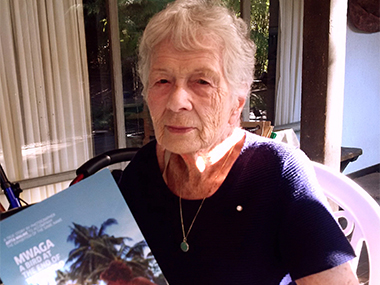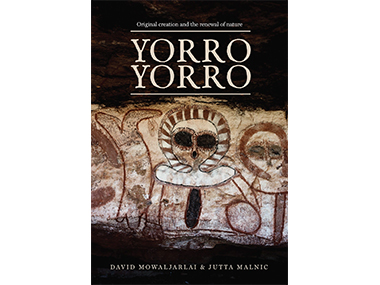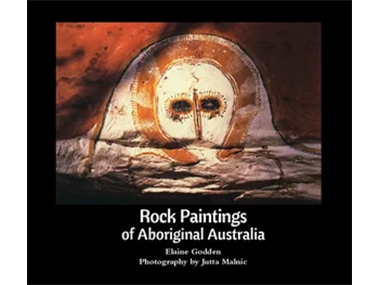Jutta Malnic 1924/2020

The photographer Jutta Malnic in her maturity
Jeremy Eccles | 26.10.20
Author: Jeremy Eccles
News source: Research
The photographer Jutta Malnic has died in Sydney aged 95. The German-born woman is significant for her picturing of Australia's ancient rock art in two books - 'Yorro Yorro – Spirit of the Kimberley' in 1993 on which she worked with Keeper of the Wandjina, David Mowaljarlai; and the earlier 'Rock Paintings of Aboriginal Australia' with archaeologist Elaine Godden, which covered a complete national spread of art from The Kimberley – where Malnic pictured only Wandjina but not Gwion Gwion figures - across to Cape York and down to southern sites like Mount Grenfell.
That was in 1982, when her photography also captured the influential ceramics of 'Shiga the Potter', text by John Ferguson.
Malnic also specialised in photography and books about the Kula Ring, north of the main island of Papua New Guinea. Between 1980 and1984 she spent documenting Kula Ring exchanges and philosophy on the Trobriand Islands and around Milne Bay Province for the book 'KULA - Myth and Magic in the Trobriand Islands'. This involved 5 visits to PNG. She then moved on to working with film production company Sky Visuals on a documentary, 'Kula – Ring of Power' as instigator, coordinator, ethnic and script adviser. The Kula Ring was a unique trading system requiring absolute trust between the participants on different islands – precious items moving clockwise around the Ring.
'Mwaga' is a photographic essay captured by Jutta Malnic on a small island off Papua New Guinea in the 1980s. It shows the near-synergistic relationship between the people on the island and the Mwaga gannets, a bird species locally accepted as ‘navigator birds’. Ancient Polynesian seafarers used these birds’ behaviour and movements as a navigation guide.
Finally in 2002, she produced 'Gilabwala and His Sister, a Trobriand Legend told by Chief Nalubutau'.
Jutta Malnic was born in Berlin to a German father and Australian mother. After her family moved to Australia in 1948, she began to work as an on-board photographer for the Orient shipping line. In 1951, she married Sergei Malnic, an architectural student whom she had met in Berlin and who followed her to Australia. They had two children, Nicola and Julian, and five grandchildren. Between 1950 and 1969, Malnic sailed on 72 cruises around the South Pacific Islands. She developed deep relationships with the people of the region. Talking to the islands’ Chiefs, shamans, women and children, she was taught about the culture and legends in the Pacific Islands — and captured her impressions through the lens of her camera.
In Australia, the science relating to rock art may have moved on – the Kimberley Foundation, for instance, recently expanded to become Rock Art Australia – and the First Nations interpretations of their art have developed into books such as 'We Are Coming to Get You'. But Malnic's enthusiasm for the art and her photographic skills remain pioneering benchmarks.
Share this:
»  del.icio.us
»
del.icio.us
»  Digg it
»
Digg it
»  reddit
»
reddit
»  Google
»
Google
»  StumbleUpon
»
StumbleUpon
»  Technorati
»
Technorati
»  Facebook
Facebook
Contact Details

The cover of Malnic's book with David Mowaljarlai that is her most significant contribution to understanding First Nations art

The cover of Malnic's first book with Elaine Godden, showing the Wandjina Wamaj Muli Muli at Leimarro in The Kimberley
Further Research
Artists: David Mowaljarlai
News Tags: Elaine Godden | Gwion Gwion | Jeremy Eccles | Jutta Malnic | Kula Ring | Rock Art Australia | the Trobriands | Wandjina
News Archive
- 28.10.20 | The 'Seven Sisters' Heading for England
- 26.10.20 | Jutta Malnic 1924/2020
- 23.10.20 | David Rathman to Promote SA Museum
- 23.10.20 | Ambassador Appointed for SA Culture Centre
- 13.10.20 | The Ebes Collection
- 12.10.20 | Sun Shines on the Wiradjuri Festival
- 06.10.20 | Hunter Valley Indigenous Cultural Hub and Museum Set to Go
- 06.10.20 | New Art Gallery to Open in Granville
- 02.10.20 | Maliwawa Rock Art
- 02.10.20 | Wonnangatta
- 25.09.20 | Movement at the Station
- 25.09.20 | Archie Has First Aboriginal Winner
- 17.09.20 | SUNSHINE SUPERGIRL
- 17.09.20 | Why not the Wynne?
- 08.09.20 | LONG JACK PHILLIPUS 1932-2020
Advertising

